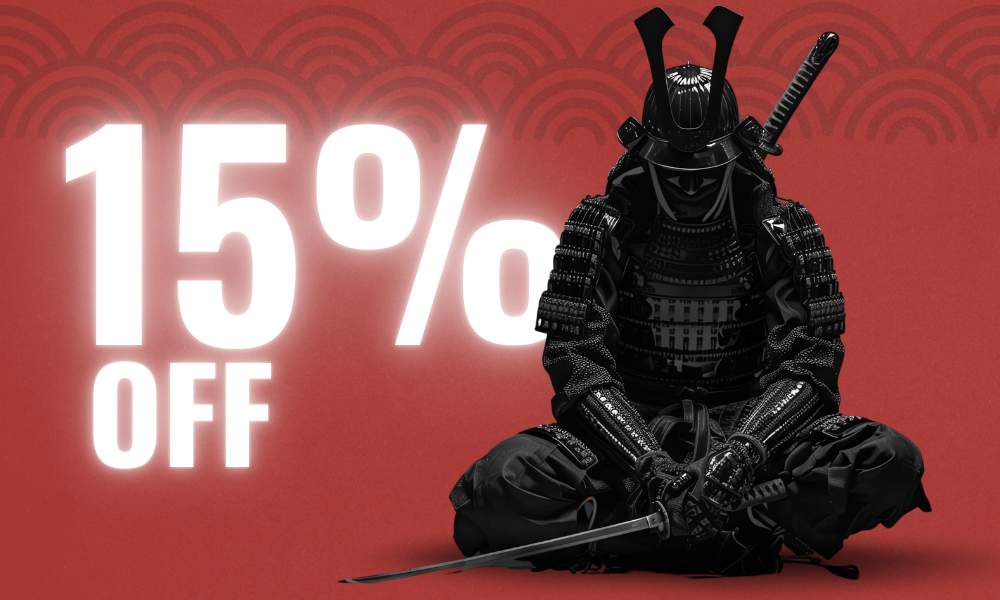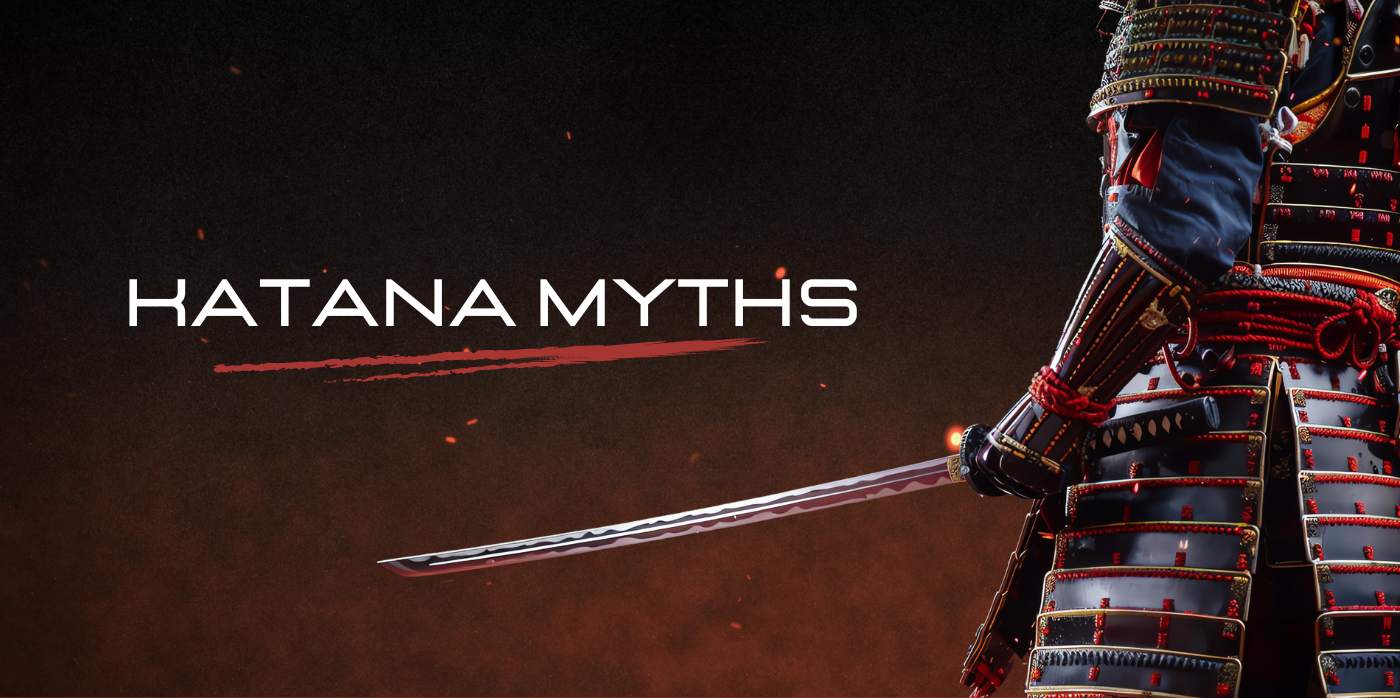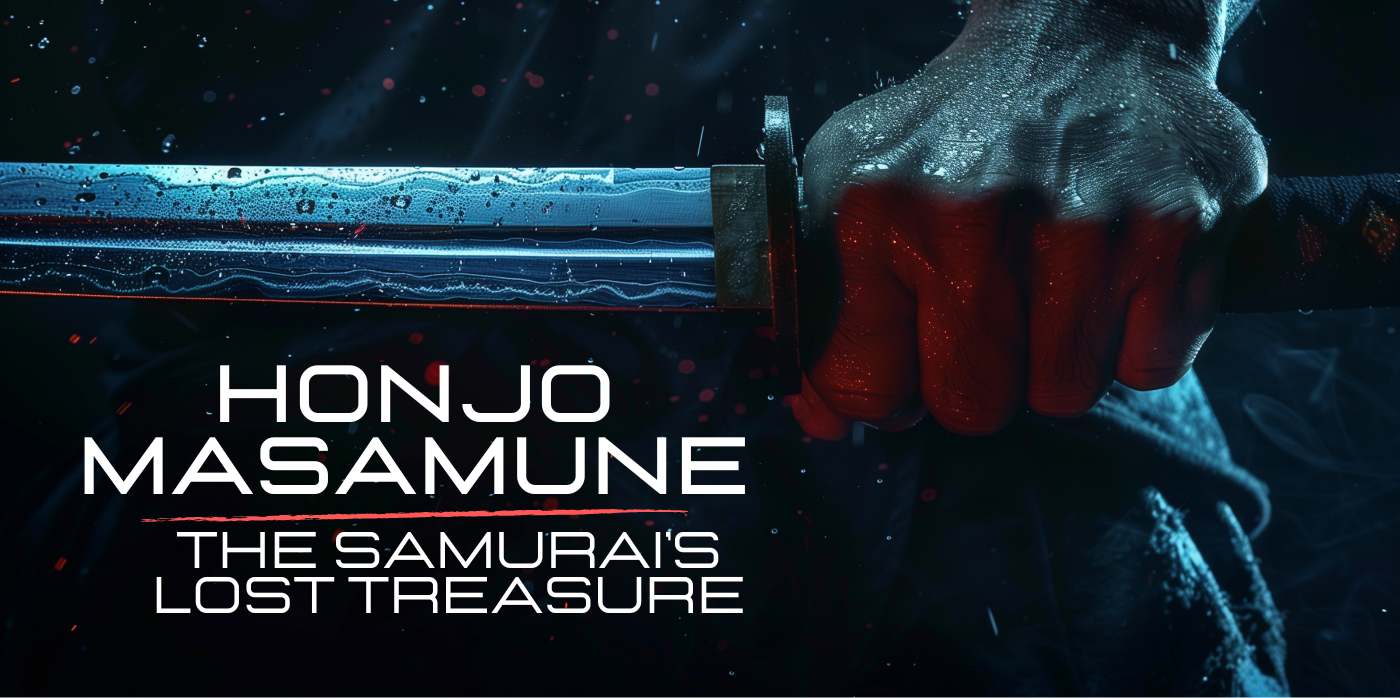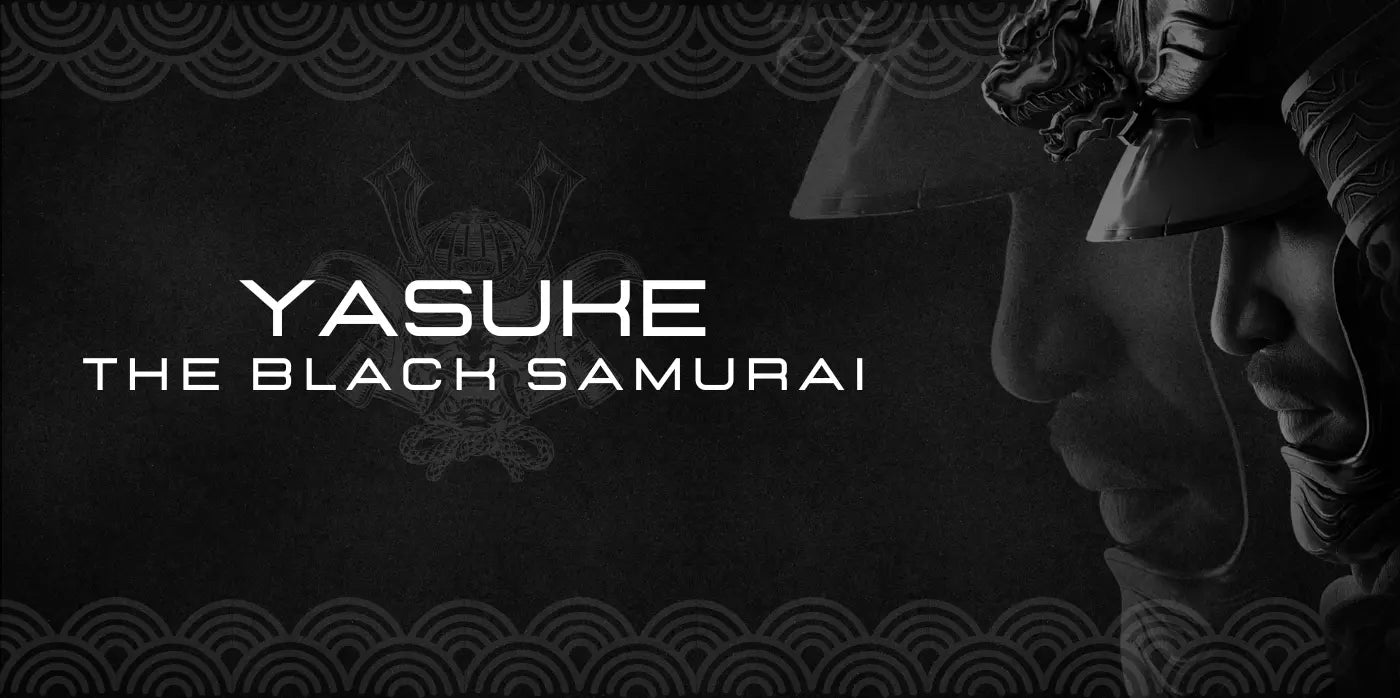Curious to discover the real story behind the legendary katana? Let's have a closer look at some of the most common myths surrounding the katana. Are these beliefs rooted in truth, or are they merely exaggerated tales spun over time? We’ll reveal surprising facts about the katana’s actual use on the battlefield, the materials used to craft it, and even the correct way to carry it—details that might just change everything you thought you knew. Ready to separate fact from fiction and uncover the hidden truths of the katana's storied past? Keep reading to explore the fascinating world of this legendary weapon!
- Myth #1: Katanas Can Cut Through Anything
- Myth #2: Katanas Were Made of High-Quality Steel
- Myth #3: The Katana Was the Samurai's Main Weapon
- Myth #4: The Katana Was a Noble Weapon
- Myth #5: Katanas Were Carried Blade Downwards
- Myth #6: Katanas Are Faster than Other Swords
Myth #1: Katanas Can Cut Through Anything
The katana, a symbol of the samurai's honor and skill, is often portrayed in popular culture as an indomitable weapon capable of slicing through anything—be it rocks, armor, or even other swords. This depiction, however, is more myth than reality. This belief is fueled by countless representations in anime, movies, and even historical reenactments, where katanas are shown slicing through rocks, metal, and other seemingly indestructible objects with ease. However, the reality is far from this belief.
The Myth of the All-Cutting Katana
In truth, while katanas are incredibly sharp, they are not invincible. Historical studies indicate that the most common injuries on the battlefield were to the neck, arms, or hands—areas that were less protected compared to the torso, which was often covered by metal armor. This armor, composed of sturdy metal plates, was designed to withstand cuts and strikes, even from a katana.

Picture: Samurai main injuries on the battlefield
The Reality: What Katanas Can and Cannot Cut
Indeed, Samurai armors were highly effective means of protection that no sword, not even a katana, could easily penetrate. No matter how well-crafted a katana is, it's still a blade made of metal. If you attempt to cut through a metal bar with a katana, you're likely to end up with a damaged blade. In the worst-case scenario, the katana could even snap in two. This is why samurais did not rely solely on their swords' sharpness in battle but also on their armor, tactics, and other weapons.

Picture: Katana damaged after hiting another sword | Credit: JoergSprave
Testing the Blade: The Dark History of Tameshigiri
However, this does not mean that katanas are not exceptionally sharp. The blacksmiths of the Edo period were highly skilled artisans who were in fierce competition to create the sharpest blades possible. These craftsmen conducted real cutting tests to prove their blades' superiority. During the Edo period, the practice of Tameshigiri—or test cutting—was used to evaluate the sharpness and quality of katanas. But the tests were far from what we might consider humane today. Instead of using bamboo or tatami mats, as is common in modern demonstrations, these tests were often conducted on human bodies. These could be the bodies of condemned criminals, captured enemies, or even unfortunate passers-by who happened to be in the wrong place at the wrong time.
The bodies were typically tied up and positioned on a mound of sand (doddan), secured by bamboo, and then stacked on top of each other to see how many torsos the katana could slice through in a single stroke. If a katana performed well, its value would skyrocket, making it a prized possession among samurai. Conversely, if a sword was not sharp enough, some swordsmiths would go as far as committing seppuku (ritual suicide) out of shame.

Picture: Tameshigiri cutting test
In 1815, a man named Yamada Asaemon Yoshitoshi compiled a book titled Kaiho Kenjaku. This book serves as a catalog of the sharpest blades tested on human bodies during the Edo period. Among the 180 katanas listed, the best were awarded the title of "Ō Wazamono," or "Excellent." Even more prestigious was the "Saijō Ō Wazamono," meaning "Supreme Grade," the highest honor for the most formidable swords in Japanese history.
Understanding the True Nature of the Katana
While the katana's reputation as a razor-sharp blade is well-deserved, it's essential to understand the context in which this sharpness was tested and celebrated. The exceptional katanas we read about or see in exhibitions were often tested under ideal conditions, not in the chaotic and unpredictable environment of real combat. Therefore, while the katana remains one of the most iconic and revered swords in history, it is not the all-powerful weapon often portrayed in popular culture.
Myth #2: Katanas were made of high-quality steel
When people think of katanas, they often imagine a blade made from the most extraordinary materials—unbreakable, razor-sharp, and forged from some sort of magical steel. This belief partly comes from the material often associated with katana production: tamahagane. While tamahagane is frequently touted as the best steel for crafting a sharp and durable blade, the reality is more complex.

Picture: Tamahagane steel
The Myth of the Perfect Steel: Tamahagane
Tamahagane, a type of steel made from iron sand found in Japanese rivers and coastal areas, is often hyped as the ideal material for katanas. This reputation is built on the belief that tamahagane provides exceptional sharpness and strength. However, what many people don’t realize is that tamahagane is far from perfect. In fact, it is often riddled with impurities, making it a challenging material to work with.
Finding high-quality tamahagane is no easy task. The steel itself is naturally impure, which means blacksmiths have to be extremely selective and skilled to create anything worthwhile. Unlike modern steel, which is manufactured to be consistent and pure, tamahagane is a product of its natural environment, and its quality can vary significantly depending on where it is sourced.
The Art of Forging: Transforming Imperfect Steel into a Legendary Blade
So, how did Japanese blacksmiths deal with these impurities in tamahagane? Instead of discarding this material, they developed ingenious techniques to transform it into a formidable blade. One such technique was folding the steel. The process involved heating, hammering, and folding the steel over and over again—sometimes hundreds of times. This wasn't done for aesthetic reasons alone; it was a practical solution to eliminate impurities and create a more uniform and durable metal.

Picture: Katana folding steel
Through this meticulous process, blacksmiths were able to distribute the carbon content more evenly throughout the blade, reducing the chances of weak spots and creating a steel that was strong yet flexible. This folding technique is what gave katanas their unique and beautiful patterns, but more importantly, it turned a mediocre material into something extraordinary.
Modern Steel vs. Traditional Tamahagane: Which is Better?
While tamahagane is often romanticized as the perfect steel for sword making, it is far from ideal when compared to modern steels. Today, materials like T10 steel or 1095 steel are engineered to be much stronger, sharper, and more resistant to wear and tear than traditional tamahagane. These modern steels are made under controlled conditions to ensure consistency and high quality, something that natural tamahagane lacks.

Picture: 1095 steel katana blade
Yet, despite these advancements, the legend of the katana persists—not because of the material itself but because of the skill of the Japanese artisans who crafted them. Their ability to turn a naturally impure steel into a weapon of incredible strength and sharpness is what made the katana legendary.
Myth #3: The katana was the samurai's main weapon
The katana is often depicted as the ultimate weapon of the samurai, a symbol of their strength and status. However, this common belief is actually a misconception.
The Reality of the Samurai's Weaponry: Beyond the Katana
While the katana is undeniably iconic, it was not the primary weapon of the samurai on the battlefield. In fact, samurai typically resorted to drawing their katana only as a last resort. Historical evidence shows that in the heat of battle, the samurai favored other weapons that were far more effective for various combat scenarios.
On the battlefield, samurai often relied on weapons such as:
- The Yumi (bow): The yumi was a powerful and long-ranged weapon that allowed samurai to strike from a distance, keeping them safely away from the immediate threat of enemy swords.
- The Yari (spear): The yari offered greater reach and could be used to keep opponents at bay or thrust through armor with significant force.
- The Naginata (halberd): The naginata combined the reach of a spear with the slashing ability of a sword, making it a versatile and formidable weapon against both mounted and foot soldiers.

Picture: Samurai's main weapons, Yumi (bow), Yari, Naginata
These weapons were preferred for their reach, range, and striking power, providing tactical advantages that the katana simply could not match. Despite its fearsome reputation, the katana was not the first choice in open battle unless a samurai wanted to engage in close-quarters combat, which was considered a more desperate or last-resort situation.
The Katana’s Role: A Secondary Weapon with Specific Uses
So, if the katana wasn’t the samurai's main weapon, what was its actual role? The katana was primarily kept in its sheath during battles and was only drawn when other options were no longer viable. It was most effective in close combat situations or to finish off a defeated enemy. Essentially, the katana served as a secondary weapon, not the primary tool of warfare that many imagine.
The Rise of the Katana
The katana's prominence grew not on the battlefield, but during the Edo period, a time of relative peace before Japan's industrial revolution. With the decline of large-scale warfare, the samurai's need for long-range weapons like bows and spears decreased. During this peaceful era, the katana evolved from a secondary combat weapon into a cultural symbol.
During the Edo period, the katana became much more than a tool of war. It transformed into a daily accessory that samurai carried with pride, a constant reminder of their warrior heritage and social status. Whether they were on a casual stroll or prepared for a self-defense situation, samurai would have their katanas by their side, symbolizing readiness and honor.
Myth #4: The Katana was a Noble Weapon
Many people believe that the katana was the noble weapon of choice for samurai, but this is only partially true. While the katana is now closely associated with the samurai, it was not always regarded as a prestigious weapon. In fact, another sword held this title: the tachi. The tachi was a longer, more curved blade worn by mounted warriors and was considered the true symbol of high rank and elite status.

Picture: Mounted Samurai with a tachi sword
On the other hand, the katana started as a secondary weapon, often reserved for foot soldiers. In its early days, the katana was not the legendary blade we think of today. It was frequently made in a rudimentary form, similar to the naginata—a type of pole weapon used by infantry. These early katanas were often mass-produced, meant to be disposable and easily recycled, unlike the meticulously forged tachi, which exuded quality and class.
The Tokugawa Era and the Katana’s Elevated Status
The widespread use of the katana in feudal Japan led to a significant shift in its perception and status. After the victory of the Tokugawa clan and the establishment of a stable government, the ruling authorities initiated “katanagari” operations, or sword hunts. These operations were aimed at disarming the civilian population and reserving the possession of katanas exclusively for the samurai class. This move was a deliberate effort to consolidate power and maintain social order by limiting access to weapons.
It was this act that truly cemented the katana as a symbol of the elite warriors. By restricting the ownership of katanas to the samurai, the Tokugawa government reinforced the idea that the katana was not just a weapon, but a badge of honor and privilege. From that point on, the image of the katana as a legendary weapon began to take root deeply in Japanese culture.
Myth #5: Katanas Were Carried Blade Downwards
When it comes to the katana, the way it is carried isn't just a matter of tradition or style—it's a crucial aspect of its combat effectiveness. Many people have seen images of samurai or enthusiasts carrying their katana, but not everyone knows the right way to do it.
Why the Blade Faces Up: The Art of Iaijutsu
You might have noticed that the katana is often depicted with its sharp edge facing upward when carried in the obi (belt). This isn't just a stylistic choice; it has a very practical purpose rooted in combat techniques. The upward-facing edge allows the samurai to draw and strike in one seamless, fluid motion—a technique known as Iaijutsu.

Picture: How to carry a katana
Imagine encountering an enemy in a narrow alley or during a sudden ambush. The samurai could swiftly draw the katana, slicing through the air and landing a decisive blow to an opponent in one smooth action. This method, ideal for close-quarters combat on foot, maximized speed, precision, and lethality. The technique allowed the samurai to go from a state of rest to a full attack in a split second, catching enemies off guard and delivering deadly strikes with minimal effort.
The Tachi vs. The Katana: Different Designs for Different Combat Scenarios
To understand why the katana is carried blade-up, it's important to look at its predecessor: the tachi. The tachi, an older sword design, was carried with the blade facing down. This wasn't a mistake but rather a design choice suited to its purpose. The tachi had a more pronounced curvature starting near the hilt, and it was optimized for mounted combat.
When a samurai was on horseback, carrying the tachi with the edge down allowed for a swift draw and downward strike, perfectly positioned to attack an enemy's head or upper body from a higher vantage point. The sword was suspended by rings, making it ideal for striking downward in a fluid, powerful motion while remaining securely in the saddle. This method of carrying the sword and its design were perfect for mounted warfare, where quick, powerful downward strikes were often more effective than the quick-draw techniques used on foot.
Myth #6: Katanas are Faster than Other Swords
This idea is widespread, thanks to portrayals in movies, anime, and video games, where katanas are depicted as lighter and faster than other swords. But is this really the case? Not really.
In popular imagination, swords like the European longsword are often portrayed as heavy, cumbersome weapons requiring great strength to wield. However, this perception is largely based on myth rather than fact.
When we compare the katana to other swords of similar size, such as the European longsword, we find that the weight is almost the same. For example, two-handed swords like longswords were actually quite thin and rarely weighed more than 3kg (about 6.6 lbs). Contrary to popular belief, they were not the heavy, unwieldy weapons often shown in media.

Picture: Katana weight comparison with other swords
The same goes for one-handed swords. While many assume that these are more maneuverable, fast, and agile compared to two-handed swords, the reality is different. A one-handed sword, because its weight is supported by just one arm, actually requires more strength to wield effectively. In contrast, two-handed swords distribute the weight across both arms, allowing for greater control and precision in movement.
The Importance of Balance in Sword Speed
When it comes to swordsmanship, speed is not solely determined by weight; balance plays a crucial role. The balance of a sword refers to how its weight is distributed between the handle and the blade. This distribution affects how easily the sword can be maneuvered and how effective it is in delivering cuts.
The earliest katanas were not as well-balanced as those forged during the Edo period. Over time, the design of the katana evolved, with many changes focused on improving balance. This evolution is similar to what happened with Western swords and other types of blades, where balance adjustments were made to enhance handling and performance.
There's no one-size-fits-all answer when it comes to the perfect balance of a sword. If the balance point is too close to the handle, the sword will be easier to maneuver, allowing for quick, agile movements, but it will lack cutting power. On the other hand, if the balance is closer to the tip, the sword will deliver more powerful cuts but will be slower to move. Swordsmiths had to make trade-offs based on the intended use of the sword and the style of combat it was designed for.

Picture: Katana balance
The True Speed of the Katana: Strengths and Limitations
The key takeaway is that the katana isn’t inherently faster than any other sword. Its speed and effectiveness depend on several factors, including weight, balance, and, most importantly, the skill of the person wielding it. While the katana is optimized for certain types of swift, fluid strikes—particularly those drawing techniques used in Iaijutsu—it is not universally faster or more maneuverable than other swords.
Each type of sword has its own strengths and weaknesses. For instance, a longsword might excel in thrusting attacks and parries, while a katana might be better suited for quick, slashing cuts. The idea that one type of sword is categorically faster than all others oversimplifies the complex art of swordsmanship.
Is the katana a bad sword?
So, does all of this mean we should consider the katana a mediocre sword comapred to other swords? Absolutely not. The katana has undoubtedly earned its reputation as a legendary blade, and its design, sharpness, and rich cultural history make it a fascinating weapon. However, as we’ve explored throughout this article, many of the characteristics attributed to the katana are often exaggerated, sometimes even bordering on the mythical.
The katana's true value lies not in the myths that surround it, but in its unique design and the skill required to wield it effectively. It’s a weapon that has stood the test of time, evolving from a tool of war to a symbol of samurai honor and Japanese craftsmanship. Yet, it's important to remember that behind every myth, there’s a much more nuanced reality. The katana is not inherently superior to all other swords, nor is it a perfect weapon. It has its strengths and weaknesses, just like any other tool designed for combat.






